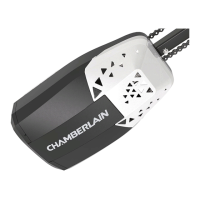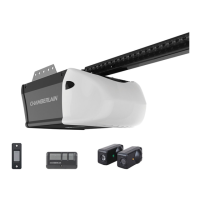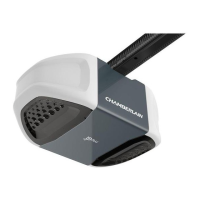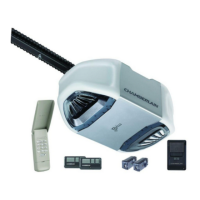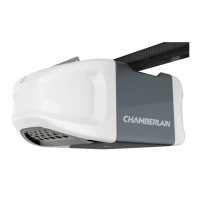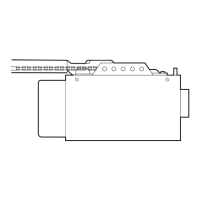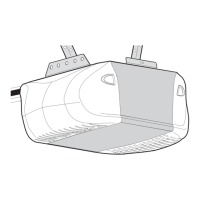31
Adjustments
STEP 2 Test the Safety Reversal System
Withouta properlyinstalled safetyreversal system, persons (particularlysmall children) could be
SERIOUSLY INJURED or KILLED by a closing garage door.
• Safety reversal system MUST be tested every month.
• After ANY adjustments are made, the safetyreversal system MUST be tested.Door MUST reverse
on contactwith 1-1/2" (3.8 cm) high object (or 2x4 laid flat) on the floor.
1. With the door fully open, place a 1-1/2 inch (3.8 cm) board (or a 2x4 laid flat) on the floor,
centered under the garage door.
2. Press the remote control push button to close the door. The door MUSTreverse when it makes
contactwith the board.
If the door stopsand does not reverse on the obstruction, the down travel needs to be increased (refer to
AdjustmentStep 1). Repeat the test.When the door reversesupon contact with the 1-1/2 inch board,
remove the board and open/close the door 3 or 4 timesto test the adjustment. Ifthe garage door opener
continues to fail the safetyreversal test, call a trained door systems technician.
STEP 3 Test the Protector System
®
Without a properly installed safety reversing sensor, persons (particularly small children) could be
SERIOUSLY INJURED or KILLED by a closing garage door.
1. Open the door. Place the garage door opener carton in the path of the door.
2. Press the remote control push button to close the door. The door will notmove more than an
inch (2.5 cm), and the garage door opener lights will flash 10 times.
The garage door opener will notclose from a remote control if the LED in either safetyreversing sensor
is off (alerting you to the fact that the sensor is misaligned or obstructed). If the garage door opener
closes the door when the safetyreversing sensor is obstructed (and the sensors are no more than 6
inches [15 cm] above the floor), call for a trained door systemstechnician.
